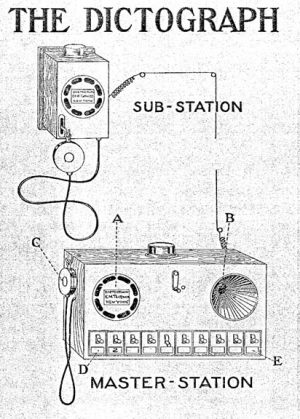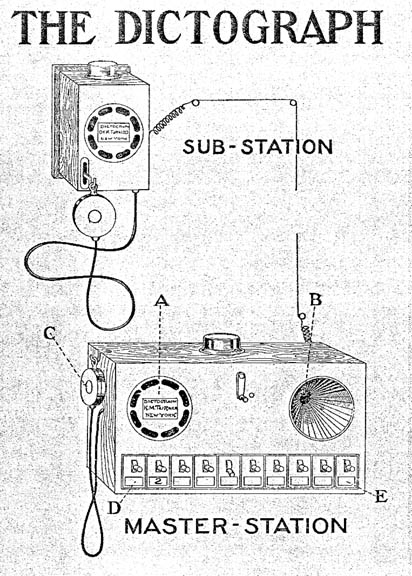
Another in our series of new transcriptions of contemporary articles on the Leo Frank case.
Atlanta Journal
Friday, May 23rd, 1913
Instrument Was Put In by Lawrence O. Surles of the Southern Bell Telephone Company—George M. Gentry, Took Down the Conversation in Shorthand
The dictograph, through which was recorded the conversation held by agents of the city detectives with Attorney Thomas B. Felder, was most ingeniously arranged and installed by Lawrence O. Surles, chief clerk of the traffic department of the Southern Bell Telephone and Telegraph company, who is the Atlanta representative of the Dictograph Manufacturing company.
Just behind the lower portion of a dresser front board in room No. 31 of Williams House No.2 was screwed two tiny dials, the transmitters or sounders of the cunning little device. Running from these dials were two dark red wires, which were so hidden in the crevices of the dresser as to be invisible even to a suspicious person who might have made a minute investigation.
The dresser was placed directly in front of a door which connected with room No. 32, and the two wires were run through the keyhole of this door. To further avoid the possibility of discovery of the instrument or its wires the dresser was then screwed to the door frame so that it could not be pulled or moved.
Inside room No. 32 the wires ran through two small dry batteries, of the type used for electric door-bells and were there attached to the receiver, which hung upon a hood-piece exactly similar to those employed by operators of private branch telephone exchanges.
Every sound in room 31 was picked up by the sensitive transmitters and delivered to the receiver in room NO. 32. With the hood adjusted about his head so that a highly-sensitized transmitter fitted snugly to each of his ears. George W. Gentry, a nephew of W. T. Gentry, president of the Southern Bell and Cumberland Telephone companies, who is employed as a stenographer by the General Fire Extinguisher company, sat at a table in room No. 32 and took down in shorthand the conversation which the dictograph brought to him from room No. 31.
Room 32 faces on Forsyth street, and although the windows were down, the noise from the street occasionally drowned out the dictograph, causing Mr. Gentry to lose portions of the conversation.
SURLES AFFIDAVIT.
STATE OF GEORGIA,
COUNTY OF FULTON.
Personally appeared before, a notary public in and for the above state and county, L. O. Surle, who, being duly sworn deposes and says he is the possessor of a good, first class dictograph, and that he did, at the request of Chief of Detectives N. A. Lanford, put the said apparatus in rooms 31 and 32 of the Williams House No. 2, at 34 and 36 North Forsyth street, in the city of Atlanta, Ga., and after so installing this machine he tested it and found it to be working perfectly, and that it was a good, reliable machine.
L. O. SURLES.
Sworn to and subscribed before me this 22d day of May, 1913.
JOHN CORRIGAN,
Notary Public, Fulton County, Ga.
* * *
